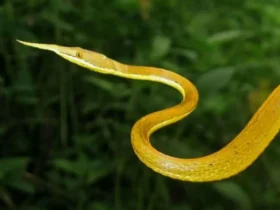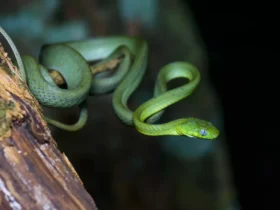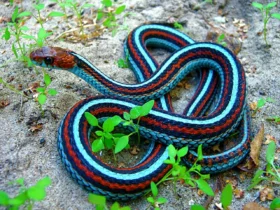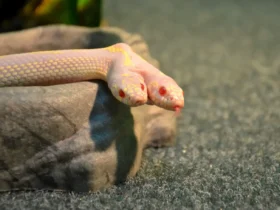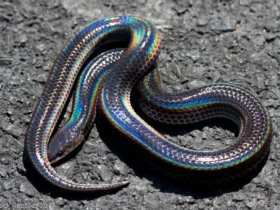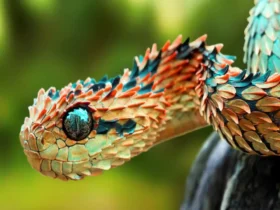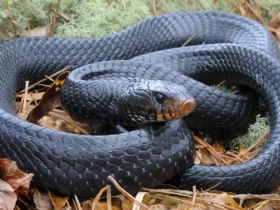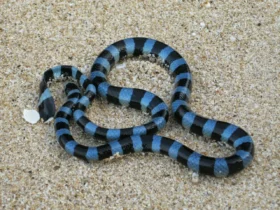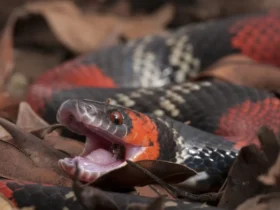The Red-necked Keelback snake, scientifically known as Rhabdophis subminiatus, is a captivating species found in various parts of Asia. With its striking appearance and unique characteristics, this snake has attracted the attention of herpetology enthusiasts and nature lovers alike. In this article, we will delve into the intriguing world of the Red-necked Keelback snake, exploring its physical features, behavior, and ecological significance.
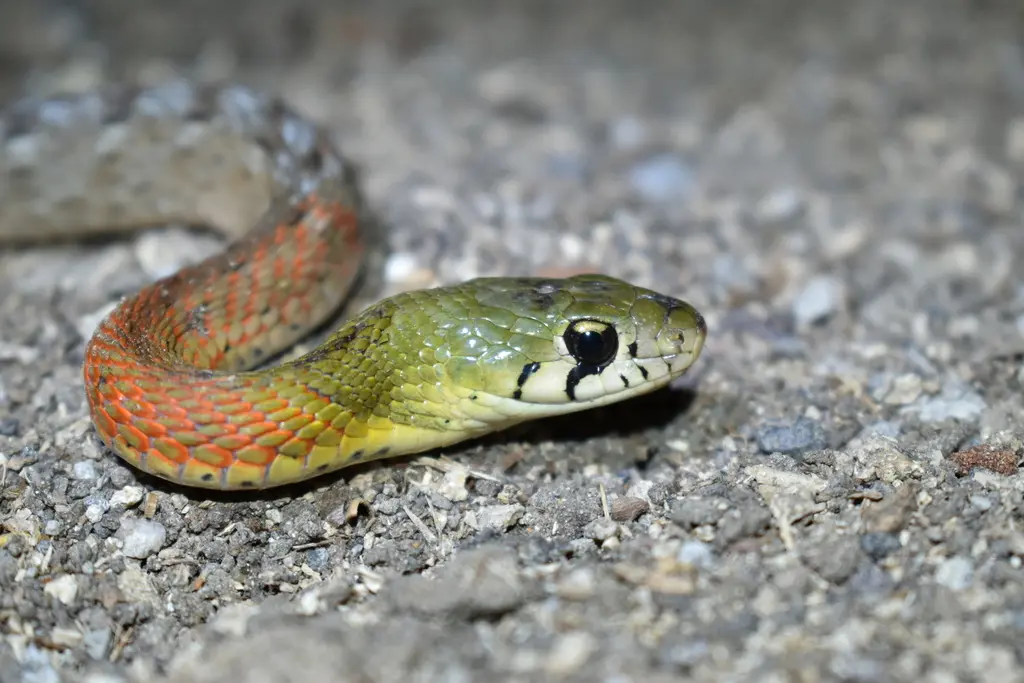
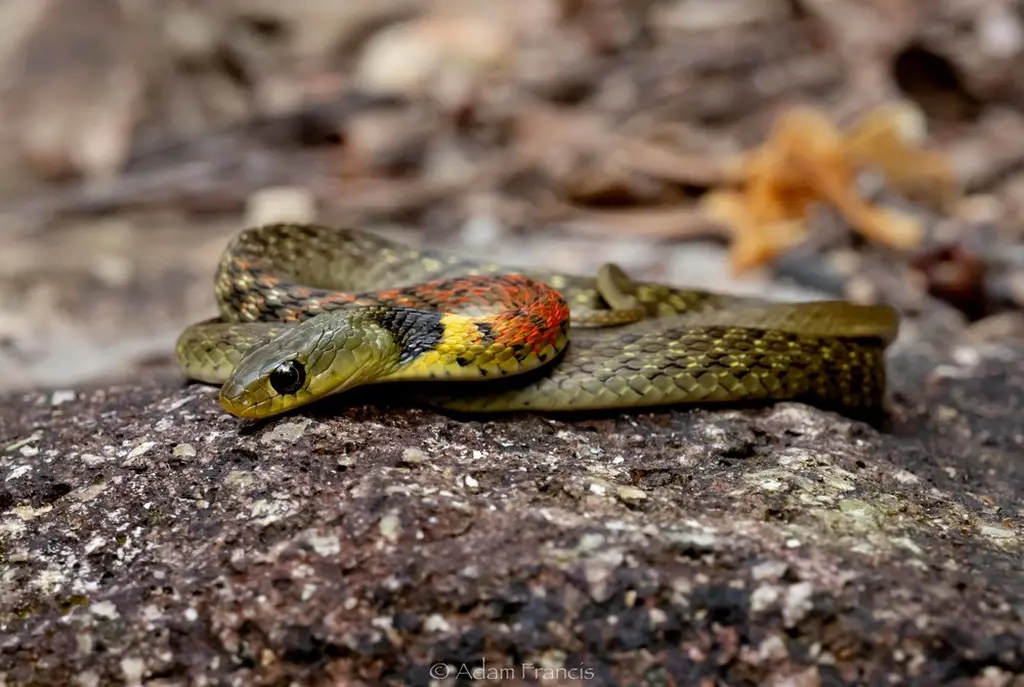
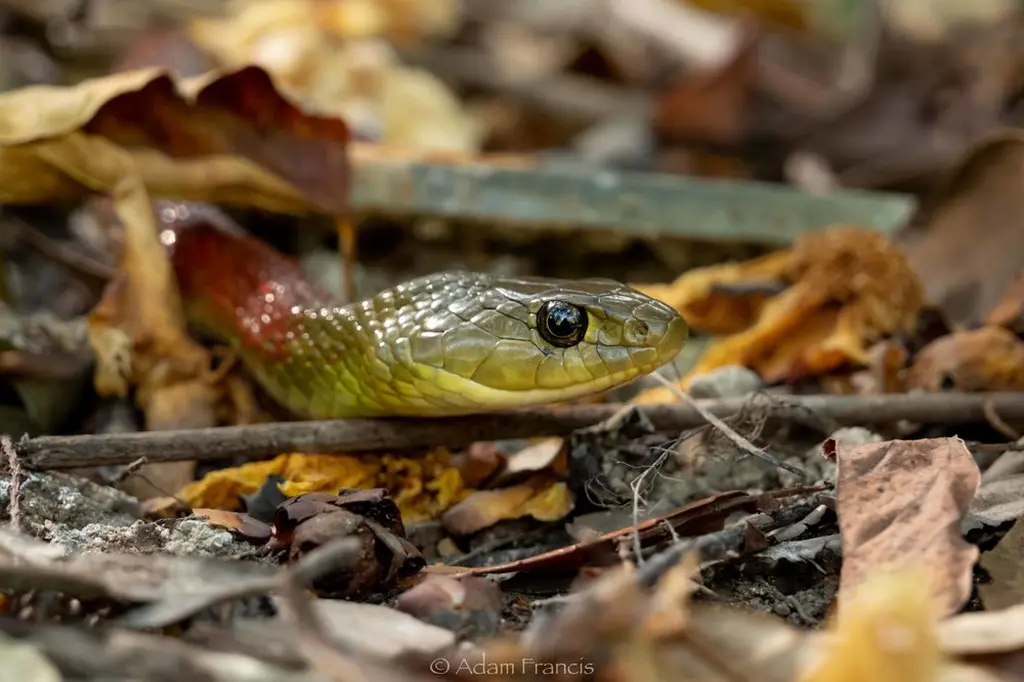
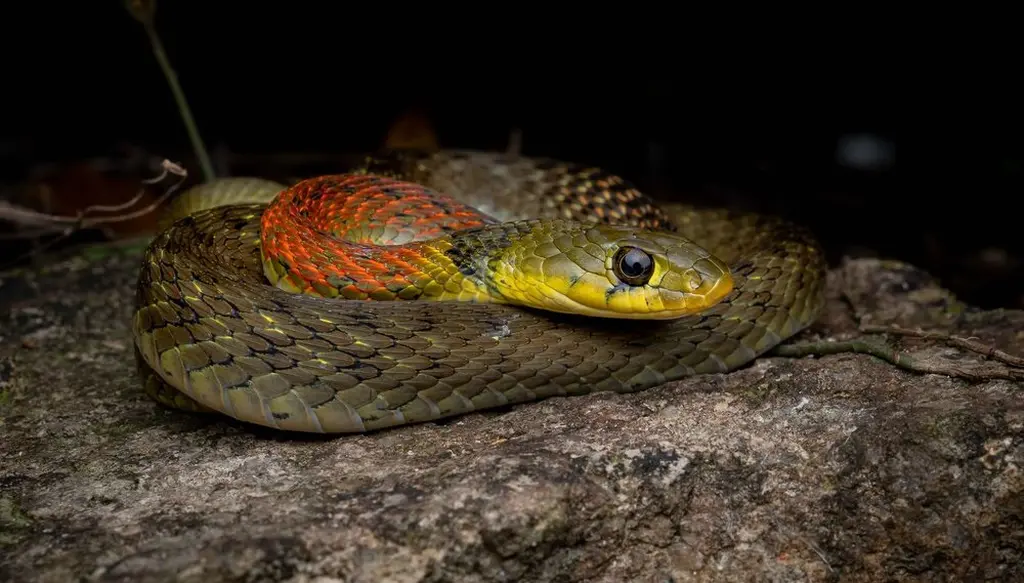
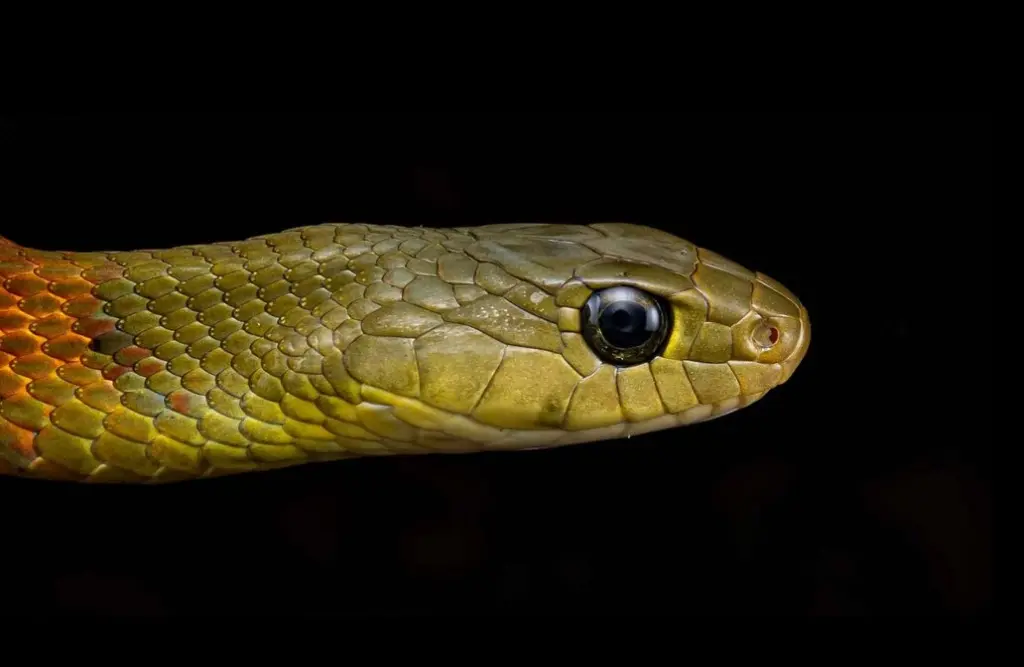
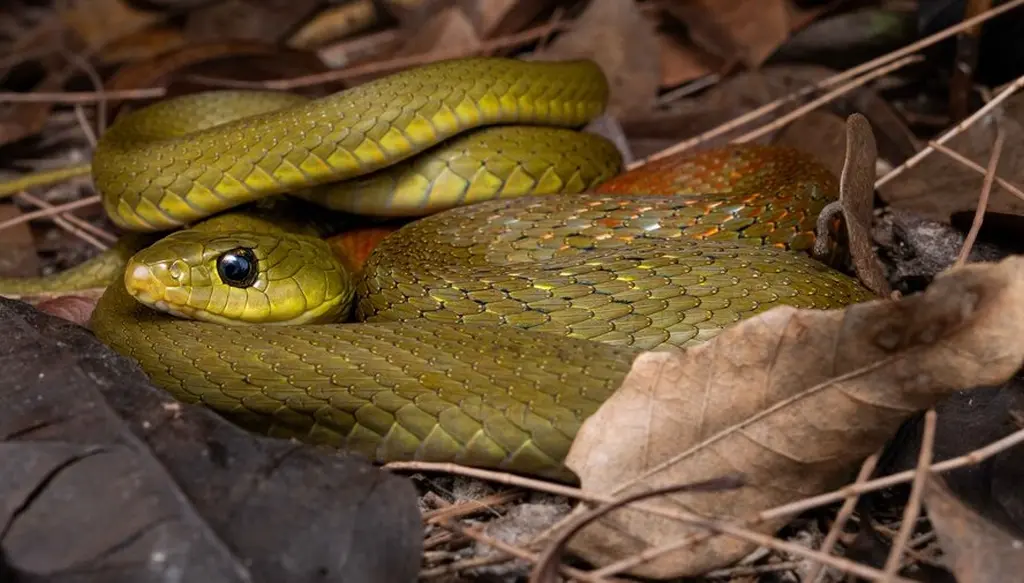
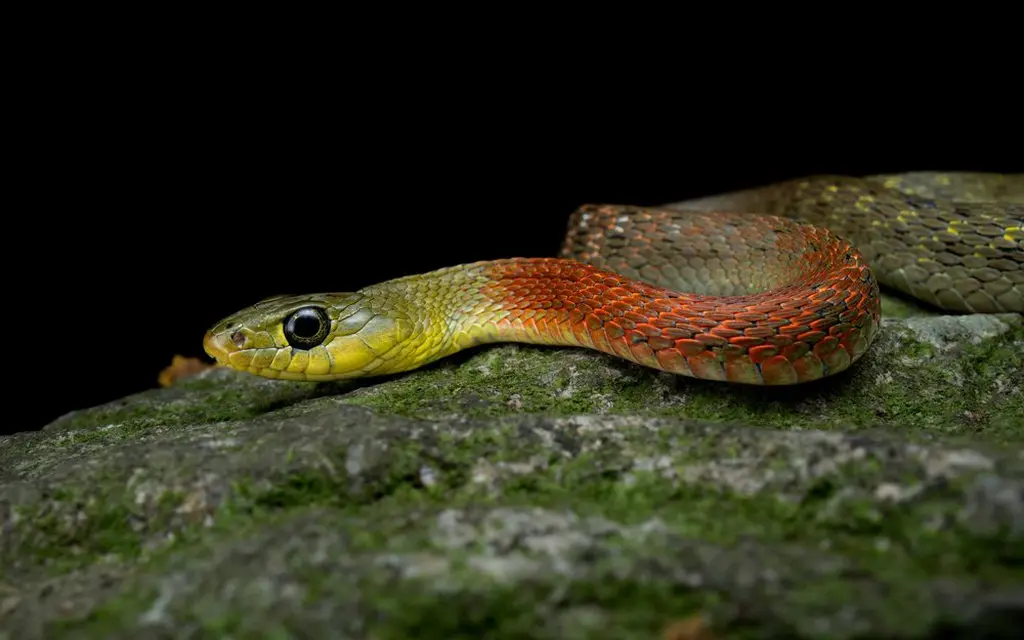
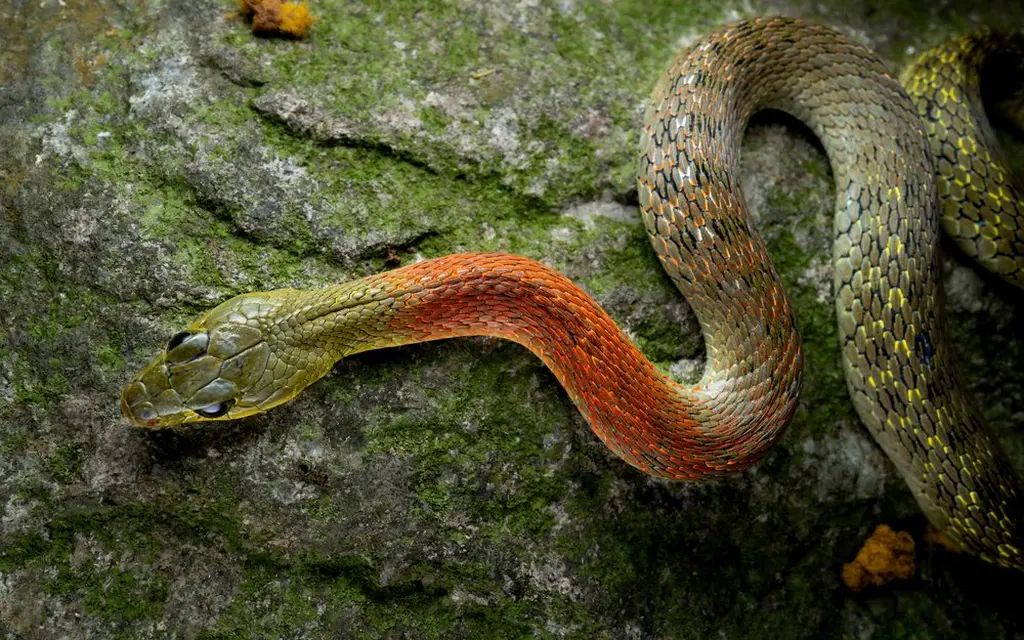
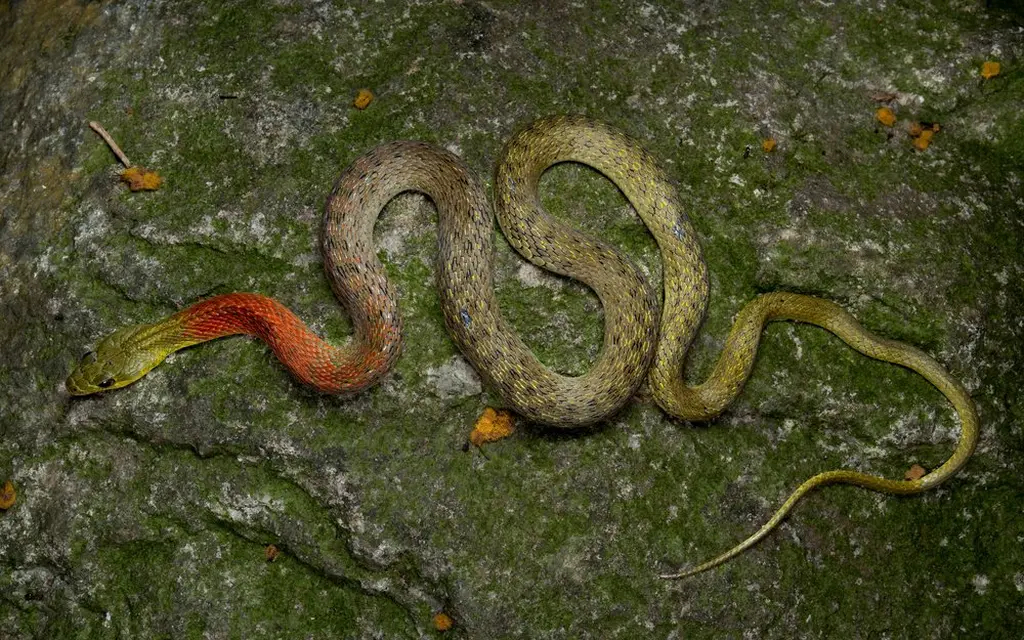
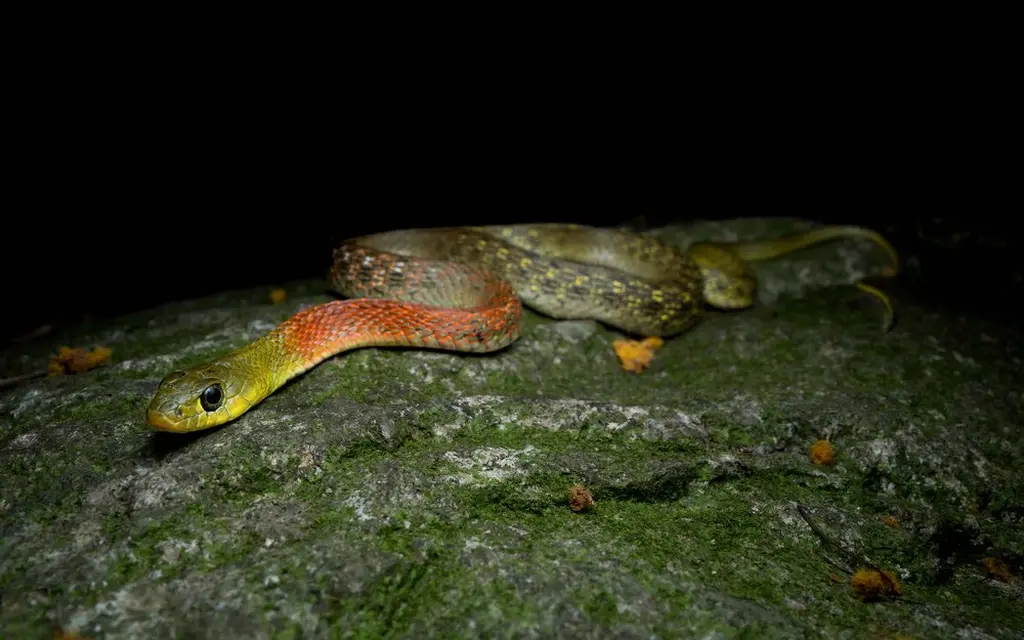
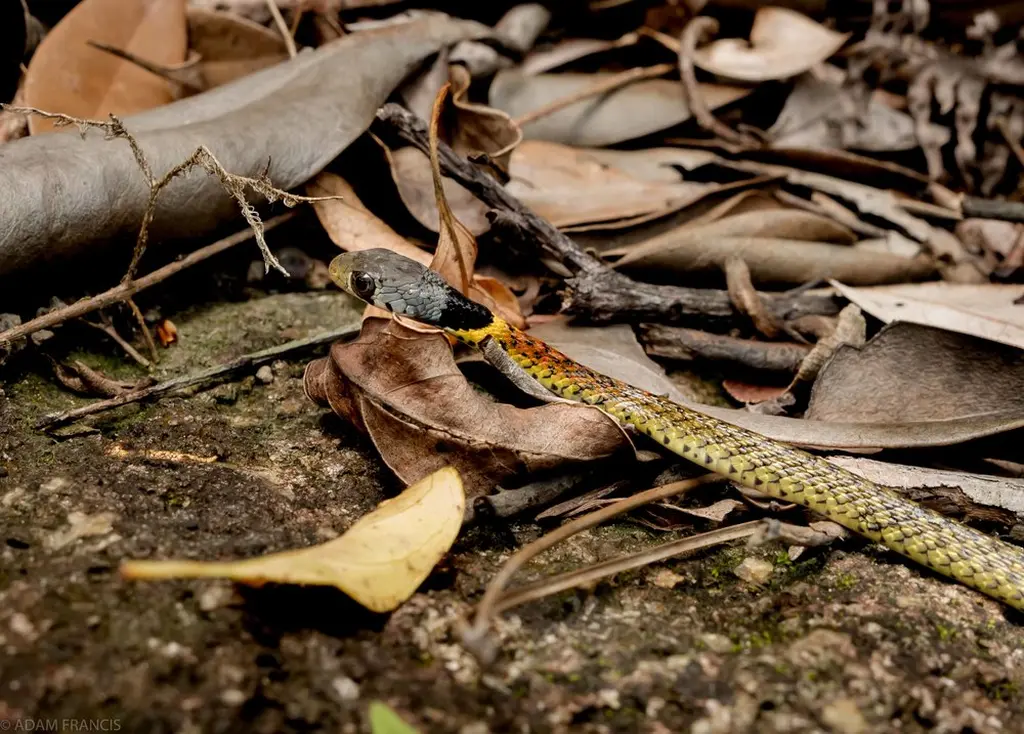
Appearance and Physical Features
The Red-necked Keelback snake possesses a vibrant and eye-catching coloration that distinguishes it from other snake species. Its dorsal surface is typically green or olive, featuring a series of black crossbands that extend from the neck to the tail. The striking red or orange coloration on its neck is a distinguishing characteristic, lending the snake its name.
Measuring an average length of 60-90 centimeters, this slender snake exhibits a streamlined body, allowing it to move effortlessly through its habitat. Its head is slightly flattened and wider than its neck, with distinct eyes and round pupils that provide it with excellent vision.
Behavior and Diet
The Red-necked Keelback snake is both diurnal and semiaquatic, meaning it is active during the day and is well-adapted to aquatic environments. It is often found near water bodies, such as streams, ponds, and marshes, where it displays exceptional swimming abilities.
These snakes primarily feed on amphibians, especially frogs and toads, which constitute a significant portion of their diet. With its excellent camouflage and patient hunting strategies, the Red-necked Keelback snake stealthily approaches its prey, delivering a venomous bite to immobilize it. The venom, though potent, is not considered highly dangerous to humans, except in rare cases of severe allergic reactions.
Reproduction and Lifecycle
The Red-necked Keelback snake follows a viviparous mode of reproduction, meaning the young are born live rather than hatching from eggs. During the breeding season, which typically occurs in spring or early summer, males engage in combat to establish dominance and court females. After mating, the female carries the developing embryos inside her body until they are ready for birth. The number of offspring produced in a single reproductive event can range from 5 to 20.
Ecological Significance
As an integral part of the ecosystem, the Red-necked Keelback snake plays a crucial role in controlling amphibian populations. By preying on frogs and toads, it helps maintain a balance in the amphibian community, preventing population explosions that could have cascading effects on the ecosystem.
Furthermore, this snake species acts as a valuable indicator of environmental health. Their presence in certain habitats signifies a healthy ecosystem with an abundance of suitable prey and a clean water source. Studying the distribution and population trends of Red-necked Keelback snakes can provide valuable insights into the overall ecological well-being of the areas they inhabit.
Final Thought
The Red-necked Keelback snake, with its vibrant appearance and fascinating characteristics, continues to captivate both scientists and nature enthusiasts alike. From its striking coloration and aquatic adaptations to its vital ecological role as a predator, this species has much to offer in terms of understanding and appreciating the diverse array of life found in Asia. By protecting its habitats and studying its behavior, we can ensure the continued survival and conservation of this remarkable snake, enabling future generations to marvel at its beauty and ecological significance.
